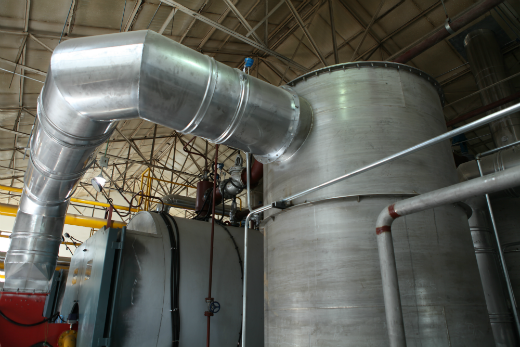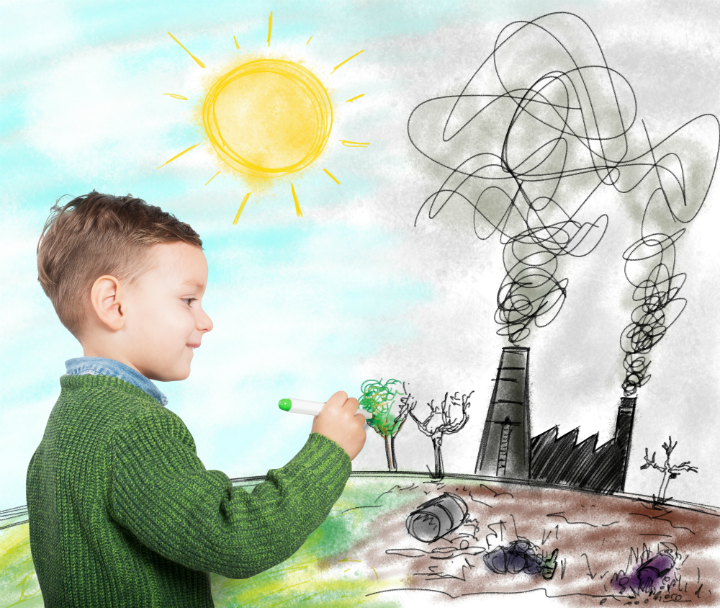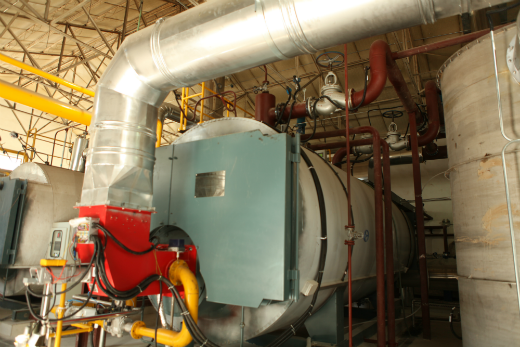Reducing pollution and increasing efficiency with European wet combustion gas boilers
China’s rapid growth has led to high levels of air pollution. While there are many contributors, burning solid fuels to heat buildings has directly contributed to the dangerous decline in air quality. Gregory Zdaniuk, Senior Engineering Manager at ENGIE China, describes how wet combustion can reduce harmful emissions and increase efficiency in the Chinese heating sector.
China’s rapid industrial growth has led to unprecedented levels of air pollution. A recent study[1] of four months of hourly air quality data concluded that, in that period, “92 per cent of the population of China experienced >120 hours of unhealthy air (US EPA standard), and 38 per cent experienced average concentrations that were unhealthy”. The data collected during the spring and summer of 2014. The situation in winter is usually worse. The main contributor to high pollution levels is the combustion of solid fuel by power stations, industry and buildings. Aware of the severity of the situation, the Beijing city authorities are making huge efforts to tackle pollution. Following a ban on new coal installations in the Beijing Municipality, on 1st April, 2017, strict nitrogen oxides (NOx) emission[2] standards for gas boilers were released, a significant development for the energy sector. The imposed NOx limit of 30 milligrams per normal cubic metre (mg/Nm3) (corrected to 3.5 per cent of oxygen (O2) content), is significantly stricter than equivalent European Union (EU) directives. Other Chinese cities such as Chengdu are adopting similar emission standards.
This article describes how ‘wet combustion’ can reduce NOx emissions from gas boilers, increase efficiency and looks at the first project to adopt this method in China.
There are two approaches to reducing NOx emissions: post-combustion methods and combustion control
techniques. Post-combustion methods address NOx emissions after formation, while combustion control techniques prevent the formation of NOx during the combustion process. Post-combustion methods tend to be more expensive and are generally not used on boilers smaller than 10 megawatts (MW).
NOx emissions in gas combustion are mainly due to thermal NOx, the reaction of nitrogen and oxygen molecules present in the air which sustains combustion. Thermal NOx formation increases exponentially with
flame temperature. Therefore, the primary method of NOx control consists of reducing the temperature of the flame by either:
• Improving flame distribution to reduce hot spots;
• Altering the air/fuel ratio and amount of excess O2;
• Adding flue gas recirculation (FGR);
• Using staged combustion; or
• Injecting water or steam into the flame zone. However, it is difficult to sufficiently lower the flame temperature while maintaining flame stability and boiler efficiency.
Water vapour pump combustion system
Adding steam or water during fuel combustion changes the stoichiometry of the reaction and dilutes the calories generated. Both phenomena causes the combustion temperature to be lower, thus reducing thermal NOx.
The water vapour pump (WVP) system is a wet combustion process that consists of pre-heating and saturating the ambient combustion air with heat and humidity recovered from flue gases. To implement this, two spray towers are placed in the air stream: one in the fresh air intake and the other one between the condenser and chimney stack, as per Figure 1.
Figure 1. WVP system schematic
A WVP system has the following characteristics:
• It recovers significantly more heat from exhaust gases compared to a regular condensing boiler. As a result, it is much more efficient.
• The WVP system creates very low flame temperatures, meaning it can easily achieve the strict 30 mg/Nm3 NOx limit.
• Its carbon monoxide (CO) (another harmful pollutant) emissions are negligible. This can be an issue for dry, ultra-low NOx combustion.
• The extensive removal of moisture occurring in the exhaust tower means that the WVP will not generate a plume at the chimney stack’s outlet.
First project in China
Over the last 15 years, WVP systems have been deployed in several European countries. In Europe, where NOx limits are less strict, the system is often installed as an energy saving measure.
In 2016, Beijing United Gas Engineering and Technology (Buget) was awarded a contract by a college in Beijing to renew its boiler house. This consisted of decommissioning their coal-fired boiler house and installing a new gas-fired system within the same building envelope. The scheduled completion date was before 1st April, 2017, when the applicable NOx emission limit was still 80 mg/Nm3. However, the college and Buget decided to explore solutions that were cleaner and achieved a better life-cycle cost. Following a technical and economic assessment, it was decided for the first time that the WVP system should be implemented in China.
The system designed by Buget (Figures 2 and 3) is comprised two 5.6 MW gas-fired condensing boilers
supplying heat to the 160,000 m2 campus. The heat distribution network is designed for a flow and return temperature of 70°C/50°C. The boilers’ duty and standby arrangement meant only one was fitted with the WVP system; the second one was fitted with a standard low NOx burner rated at 80 mg/Nm3.
 Figure 3. WVP combustion air spray tower
Figure 3. WVP combustion air spray tower
This project required close collaboration between all stakeholders to ensure that critical aspects of this type of technology were understood and that the design could be transposed to Chinese norms and standards. Commissioning works finally concluded in March 2017, with the NOx emissions measured at 23 mg/Nm3 (corrected to 3.5 per cent O2 content), well below the 30 mg/Nm3 limit. Overall boiler efficiency was measured at 107 per cent (at a return temperature of 45°C) and CO emissions were measured at 0 mg/Nm3.
Conclusions
The WVP is a proven combustion technology able to achieve ultra-low NOx emissions (<30 mg/Nm3) with a considerably higher level of efficiency and with a lower life cycle cost compared to a conventional condensing boiler. It can be retrofitted to an existing boiler without any significant loss of capacity, whereas dry, low NOx burner retrofits may require a de-rating of capacity. This is an efficient solution that has a role to play in addressing global air pollution problems. European cities exposed to considerable NOx pollution cannot be complacent, especially when the right technology is already available.
[1] Rohde RA, Muller RA (2015) Air Pollution in China: Mapping of Concentrations and Sources. PLoS ONE 10(8): e0135749. https://doi.org/10.1371/journal.pone.0135749
[2] Nitrogen Oxides (NOx) is a family of gases formed during combustion. Breathing NOx can cause severe effects on the respiratory, cardiovascular and immune systems. High levels of NOx in the atmosphere can also lead to acid rain.
ENGIE, formerly known as GDF SUEZ, was officially renamed as ENGIE on 24th April, 2015. ENGIE is a world leader in the global energy market, and is ranked 89th in the 2016 Fortune 500 list. The business of ENGIE includes natural gas industry chain, power generation, distributed energy, energy services, customer service, etc., and has operations in 70 countries. The Group achieved revenues of euros (EUR) 66.6 billion in 2016 and has 153,090 employees throughout the world.





Recent Comments